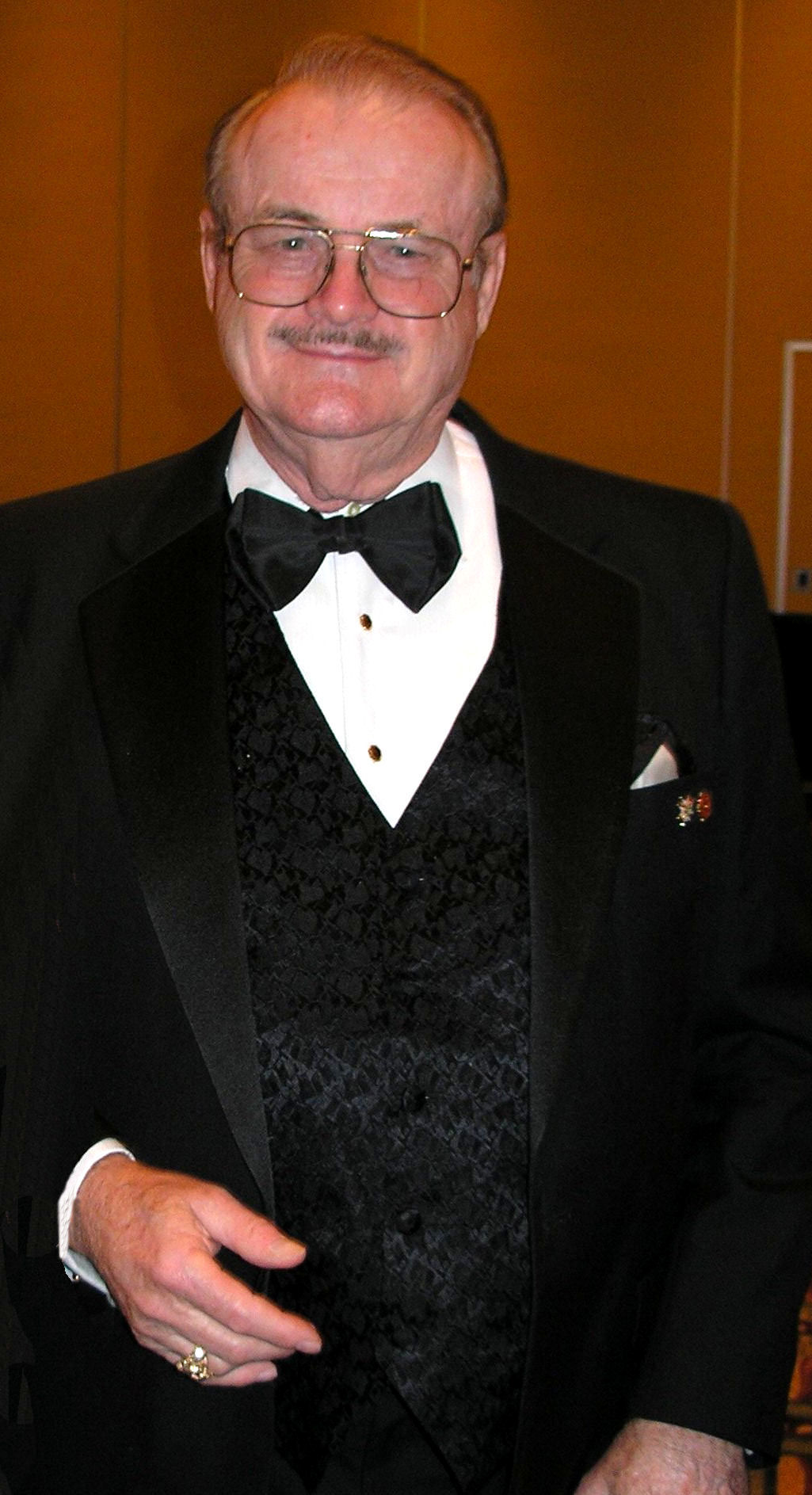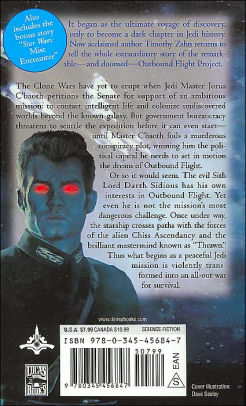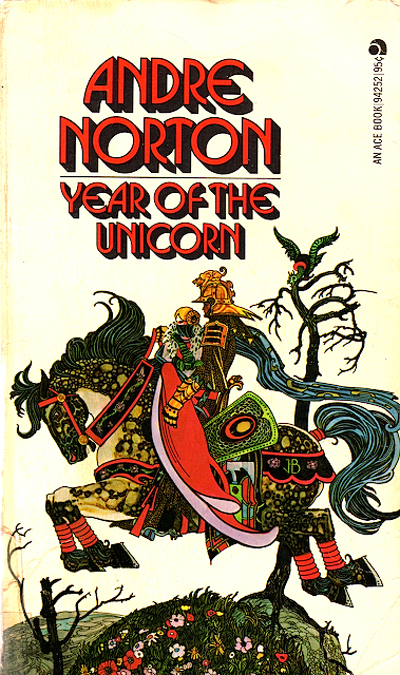About a year ago, maybe two, I covered Andre Norton’s famous first Witch World novels: Witch World and Web of the Witch World. As you may remember, those books detailed the arrival of Simon Tregarth to the Witch World from Earth. After several adventures in this new world, Simon married the Witch Jaelithe who, though she was cast out of the Witches’ Council, retained her Power after marrying him.
These next three tales, which are crucial to understanding the timeline and references in all future Witch World novels, continue their tale in a new form…
Three Against the Witch World

Three Against the Witch World is set after the Kolder War, at the very end of the year. Told from the point of view of Kyllan Tregarth, he describes how his mother, Jaelithe, gave birth to triplets. This was astounding because no one in the Witch World had ever had more than two children at once. Not in recorded memory, at least; if it ever happened before, it is lost in the Witch World’s ancient history.
But the birth was difficult, leaving Jaelithe lethargic and nearly catatonic for an entire year. This nearly drove Simon mad, and his work on Estcarp’s border with Karsten came dangerously close to killing for killing’s sake. Only when Jaelithe recovered did he calm down.
And the children? There were three: Warrior, Sage, and Witch. Kyllan is the warrior. He reached for a sword hilt when he could only crawl. The first born, Kyllan is not prone to asking questions or thinking on ancient mysteries. He is a man made to face the present moment, the desperate hour of battle.
Kemoc, the second of the triplets, is the Sage, the one with all the questions. He pries into records, old knowledge, and wants to learn anything and everything. Kaththea, the third triplet, was born almost immediately after him, and so the two have always been closer to each other than to Kyllan. Though not displayed in her early life, Kaththea has the same gifts as her mother; she is the Witch.
With Karsten maintaining its aggressive stance toward Estcarp, Simon and Jaelithe have to spend almost all their time on the border. Thus they rarely interact with their own children, whom they leave in the keep of their old friend, Loyse of Verlaine, the wife of Koris of Gorm.
The children’s only real mother is Anghart, a Falconer woman who left her village after her own deformed son was killed. The Falconers cannot tolerate weakness of any kind in their ranks because of their harsh lifestyle as mercenaries. And so, like the Spartans of old, they traditionally dispense with any child that is crippled or somehow blemished – even by, say, a large red birthmark splattered across their face. So Anghart is cold and distant to all in the keep. Only the Tregarth triplets, whom she cares for as her own, know her true warmth and nature.
Anghart may be the only one, aside from Jaelithe, who perceives the special tie among the triplets: though three distinct people with their own strengths and weaknesses, the Tregarth heirs have a mental link that lets them meld into a cohesive whole. On instinct, they do not display this ability openly or use it often. It is private, for them alone…
But when Kaththea accidentally intercepts a message sent by a Witch to the Council, asking for aid, their bond activates in response to the urgency of the summons. Captured by Karsten raiders, the Witch called her Sisters for help, and Kaththea was in the line of communication. She and her brothers immediately used their special connection to find the Witch and then help the Borderers save her.
But in doing so they revealed Kaththea’s talent. The Witches do not care for men, and because Jaelithe had left the Council, they did not test her daughter to see if she had the Power. With this rescue of the Witch, however, Kaththea’s Power has been revealed to them. The Council demands the right to test her and, if she proves to have the Power, to take her as a novice who will someday become a full-fledged Witch.
Although they almost never spend much time with their children, the Tregarths are no less protective of their offspring than any other parents. They flatly tell the Council that Kaththea is off-limits and will not be tested. But the Council is patient, and when Simon goes missing two years later, Jaelithe chases after him once she has found his location with the help of their children’s Power.
Years later, despite their parents’ best attempts to guard them, while Kyllan and Kemoc are with the border guards, the Council strikes. Sensing Kaththea’s cry for help, her brothers take off immediately to protect her. It takes the two of them a couple of days to get to the keep, where they find Anghart, barely alive. She stood by her foster daughter to the last, throwing herself between Kaththea and the Witches. When she would not be persuaded to move, they tore her will to live from her with their Power. Though she has the will to live long enough to tell Kyllan and Kemoc what happened and to advise them on how to rescue their sister, she dies two days later.
And so the Tregarth brothers remain Borderers, protecting Estcarp from attacks committed against their nation by Karsten, biding their time until they can find a way to save their sister. In one of these skirmishes Kemoc’s sword hand is injured and he has to be sent to Lormt to recover. When he comes back, he tells Kyllan he has learned where their sister is and where the triplets may hide from the vengeance of the Witches: in the East.
Why is this so special? For all those in Estcarp save Simon and his three children, there is no East on the map. There is not even a recognition of the word in the minds of those Kemoc has asked about the East. It is as if something blocks them from traveling or even thinking in that geographical direction.
So the brothers rescue their sister from the Witches’ training grounds and take her East – where they upset many balances, meet new allies, and find bitter, monstrous foes…
Warlock of the Witch World

The sequel to Three Against the Witch World, this novel is from Kemoc’s perspective. Living in the Valley of Green Silences with its people, his brother, and his sister, Kemoc leads raids against the evils that prowl the Eastern land known as Escore. Kyllan has married a high lady among the People of Green Silences – Dahaun – but Kemoc and Kaththea as yet have no such heart-ties.
Until a man named Dinzil arrives with his people to join in the Valley’s defense. Kaththea and he get along right from the get-go, and he is well known by reputation among the People of the Valley, not to mention well-liked for his charm.
The only one who cannot stand him is Kemoc. It is not that his sister, with whom he has always been close, is showing favor to the man. That bothers him, but not in the way you might think. The reason that it bothers him is that he instinctively dislikes Dinzil. He cannot find a reason for his aversion; he only knows that every time he gets close to the guy, he has to restrain the urge to grab for his sword. The fact that Kaththea and Kyllan do not have this problem, and that Kaththea is dazzled by Dinzil, only makes matters worse for the Sage.
Dahaun figures this much out through observation and asks Kemoc what his problem is. Kemoc admits that he does not want to speak ill of an ally, nor does he want to accuse a man without proof. He only knows that something about Dinzil feels wrong. He cannot say it any other way.
Unlike his siblings, Dahaun accepts Kemoc’s instinctive assessment of the man. She knows Dinzil’s reputation, knows that he has been vouched for by others as a servant of the Light. But she is not willing to dismiss the second Tregarth youth’s concerns out of hand. Instincts can be as good as knowledge or reason; sometimes, they can be even better than those. In this case, she thinks he may be right and promises to keep as close an eye on Dinzil as she can.
Later, Kemoc and one of the men in the Valley go to visit the Krogan, humans mutated centuries ago by Adepts in magic so that they can live in water, not to mention weave spells using it. The catch is that the Krogan cannot survive long out of water. If they travel too far away from any source of water, salt or fresh, they will die. Don’t bring ‘em to the desert. 😉
At the lake the Krogan call home, Kemoc meets Orsya, one of the Krogan women. Later on, the Krogan emissary states that his people wish to remain neutral. Though of the Light and not allied with Darkness, they are tired of war and just want to be left alone.
Kemoc and his guide/commander leave the lake peacefully. But on the return journey, Kemoc is separated from his friend by a flood. It is not a natural flood, either; Kemoc feels as though this flood was conjured up by something or someone of the Dark. He gets back to the Valley eventually – only to learn that Kaththea, distraught at his disappearance and her inability to find him by mind touch, has gone with Dinzil to use that man’s “means” to locate him.
Though no one else is worried, Kemoc sets out almost at once to find her. His every instinct is screaming that this was a trap set for his sister, and he has to find her before she is killed. Or worse….
Sorceress of the Witch World

The final book in this trilogy of Witch World novels is from Kaththea’s point of view. After the events of Warlock of the Witch World, Kaththea was left in a childish, not-quite amnesiac state of mind. She has had to relearn everything, and her memory has come back slowly. Soon, though, the only things she does not truly remember are what she did while she was with Dinzil.
Nevertheless, her dabbling and subsequent mind wipe have left her open to the wills of the Dark things that roam Escore. Finally, she can stand the nightmares no longer. She decides to go back to Estcarp to find a surviving Witch to retrain her in the use of her Power.
The plan goes awry, though, when an avalanche separates her from her brothers in the mountain pass that leads back to Estcarp. Alone and unable to contact her brothers due to her weakened mind bond with them, she can only hope that they are still alive and that she will be able to return to them and the Valley.
That idea seems destined to die when a primitive man finds her and takes her back to his tribe – which turns out to have an old, old, old Witch guiding it around Escore’s myriad dangers.
Although she does not like being in this tribe or her separation from her brothers, Kaththea instantly recognizes that this Witch can help her regain control of her Power. This arrangement works well enough – until the old woman appoints Kaththea her replacement in the tribe’s society, seconds before she topples over dead!
Trapped with a tribe she does not want to lead, Kaththea slowly breaks free of the spell holding her to these people. When her attempt to safely guide the tribe ends in a massacre, Kaththea escapes, with only her most bitter enemy for company as she searches for a way back to the Valley.
The search is hampered not simply by those who are hunting the two women, but also by the magnetic pull of magic coming from an abandoned Adept’s castle. Unable to resist the pull, Kaththea and the other woman enter the castle and pass through a gate into another world –
It is through these events that Kaththea becomes the Sorceress of the Witch World.
Wow, that was a longer post than I had intended to write. Whew, I did not realize how much I would have to say to whet your appetites, readers! I think I will sign off now and let you look up these books yourselves. ‘Till next time!



































